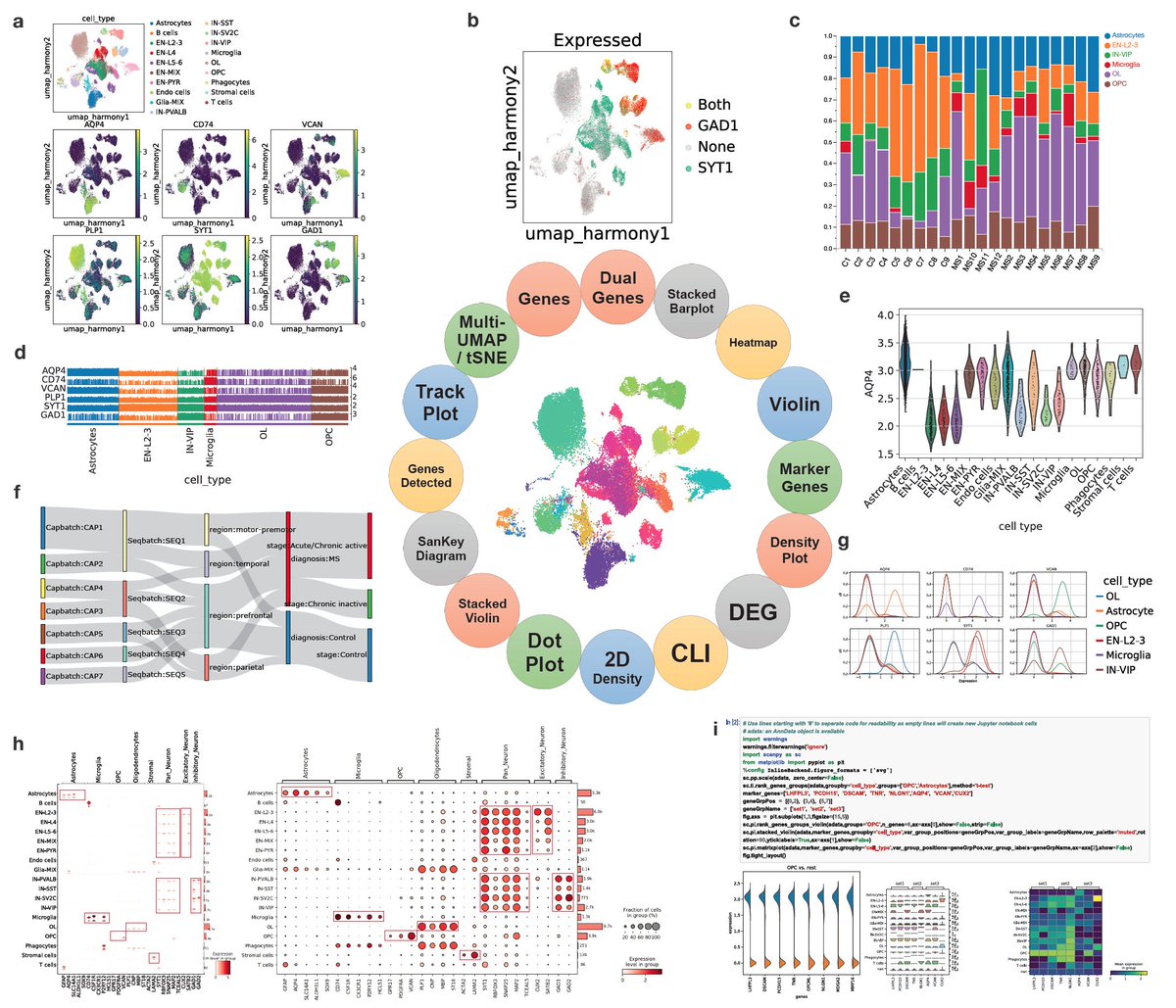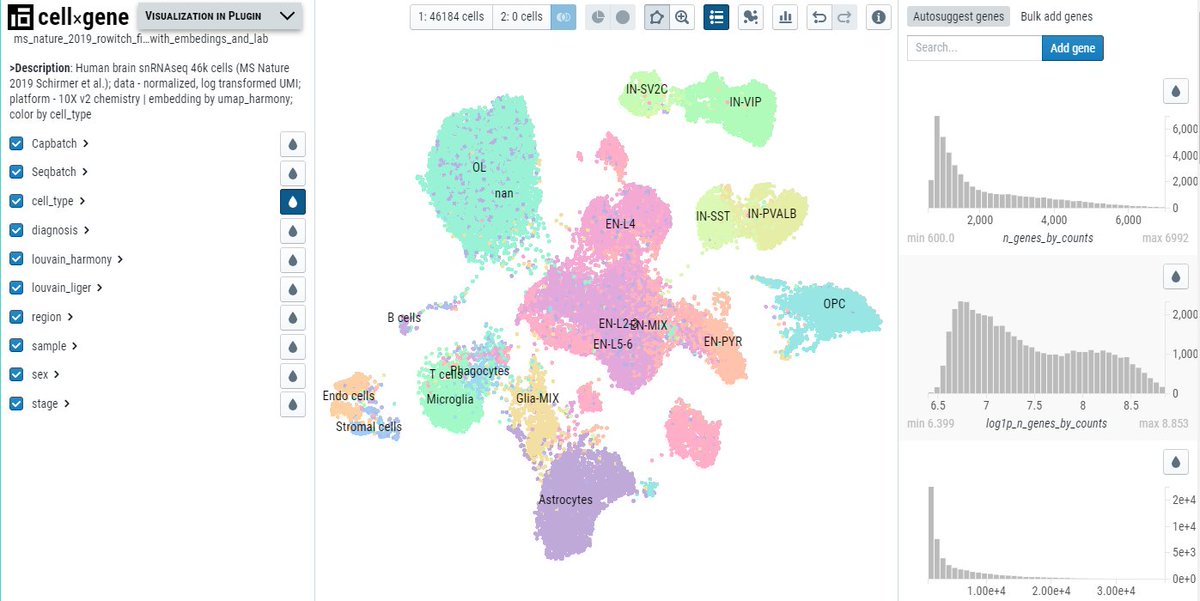Discover and read the best of Twitter Threads about #snrnaseq
Most recents (4)
In 2019 "Single-cell multimodal omics" was deemed @naturemethods Method of the Year, and since then many new multimodal methods have been published. But are there tradeoffs w/ multimodal omics?
tl;dr yes! An analysis w/ @sinabooeshaghi & Fan Gao in biorxiv.org/content/10.110… 🧵1/
tl;dr yes! An analysis w/ @sinabooeshaghi & Fan Gao in biorxiv.org/content/10.110… 🧵1/
There are a lot of ways to look at this question and we have much to say (long 🧵ahead!). As a starting point let's begin with our Supplementary Figure 4. This is a comparison of (#snRNAseq+#snATACseq) multimodal technology with unimodal technology. Much to explain here: 2/ 

(a) & (b) are showing the mean-variance relationship for data from an assay for measuring RNA and TAC (transposable accessible chromatin) in the same cells. The data is from ncbi.nlm.nih.gov/geo/query/acc.…
Cells from human HEK293T & mouse NIH3T3 were mixed. You're looking at the RNA. 3/
Cells from human HEK293T & mouse NIH3T3 were mixed. You're looking at the RNA. 3/
In a new preprint w/@kreldjarn, @DelaneyKSull, @GuillaumOleSan & @pmelsted we address a shortcoming in current approaches to quantifying single-nucleus RNA-seq: biorxiv.org/content/10.110…
tl;dr care has to be taken in quantifying nascent vs. mature transcripts. #snRNAseq #scRNAseq🧵
tl;dr care has to be taken in quantifying nascent vs. mature transcripts. #snRNAseq #scRNAseq🧵
First, note that single-cell RNA-seq data provides some quantification not only of processed (mature) messenger RNAs, but also of nascent molecules. That observation by @GioeleLaManno, @slinnarsson and colleagues underlies RNA velocity. But what about single-nucleus RNA-seq? 2/
It’s comics time again! Glad to see our manuscript out in @NatureComms where we describe neuronal subtypes affected in temporal lobe #epilepsy and reveal a neuronal subtype-specific molecular phenotype.
nature.com/articles/s4146…
Here's a brief explanation of our findings 1/10
nature.com/articles/s4146…
Here's a brief explanation of our findings 1/10

We used the surgically excised temporal lobe (TL) cortex from 9 individuals with epilepsy and compared against 10 non-epileptic controls. MRI of the TL showed epilepsy-associated abnormalities.
We processed >110,000 cells from these samples for #snRNAseq 2/10
We processed >110,000 cells from these samples for #snRNAseq 2/10

We developed Visualization in Plugin on top of #cellxgene to generate violin, stacked violin, stacked bar, heatmap, volcano, embedding, dot, track, density, 2D density, sankey and dual-gene plot in high-resolution SVG/PNG format for #singlecell #rnaseq dataset #scRNAseq #scanpy 

The preprint is available here
@cellxgene VIP unleashes full power of interactive visualization, plotting and analysis of #scRNA-seq data in the scale of millions of cells biorxiv.org/content/10.110…
@cellxgene VIP unleashes full power of interactive visualization, plotting and analysis of #scRNA-seq data in the scale of millions of cells biorxiv.org/content/10.110…
Want to play with cellxgene VIP live? Demo is here
cellxgenevip-ms.bxgenomics.com
Dataset: MS brain #snRNAseq dataset by @schirmerlab and #RowitchLab
cellxgenevip-ms.bxgenomics.com
Dataset: MS brain #snRNAseq dataset by @schirmerlab and #RowitchLab


